Oxeye daisy identification and control
Information about the noxious weed Oxeye daisy. Oxeye daisy is also known by its scientific name, Leucanthemum vulgare.
About this weed
Oxeye daisy is a non-regulated Class C noxious weed. This means due to how widespread it is, property owners are not required to control this species on their property, though it is encouraged.
Oxeye daisy is also on the Washington quarantine list and it is illegal to buy, sell, or offer it for sale in the state.
Oxeye daisy is known as Leucanthemum vulgare and it is in the aster/daisy family. Other common names include ox-eye daisy, marguerite, dog daisy, filigran, moon daisy, and field daisy.
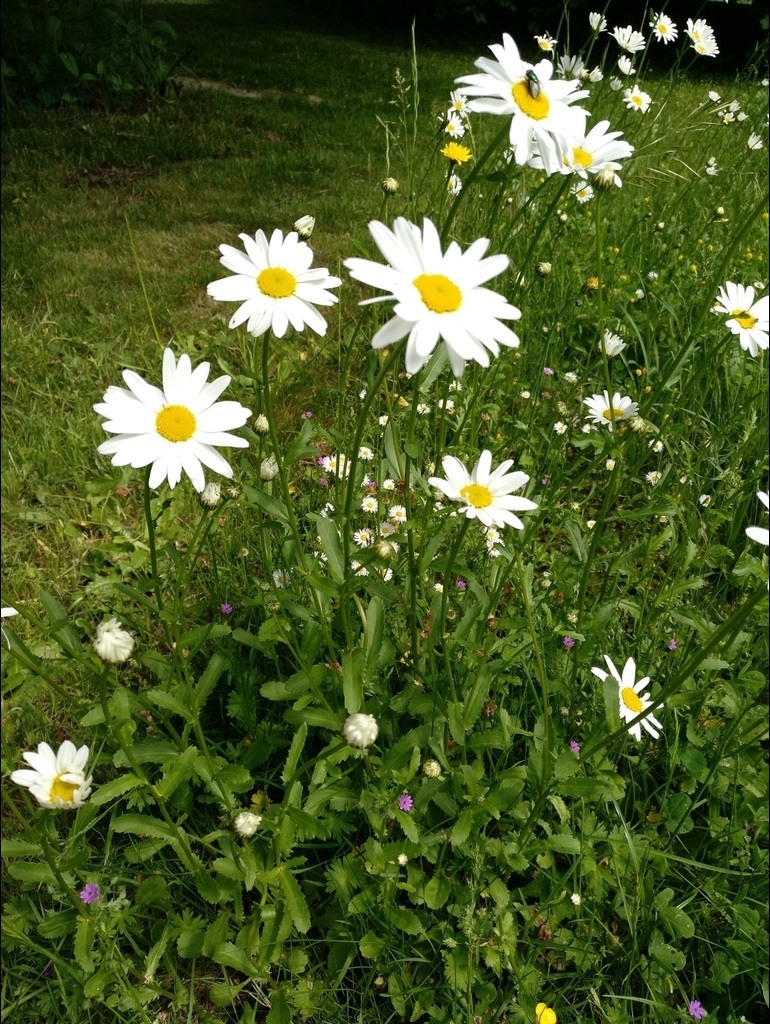
Why it's a problem
Oxeye daisy thrives in fields where it forms dense patches that as a result displace various native wildflower species. This in turn lowers species diversity wherever it is introduced. It also reduces forage in pastures and crop yields, and though rarely grazed, can ruin the flavor of cow's milk. Oxeye daisy is reported to impact 13 crops across 40 countries.
Plant description
Oxeye daisy originates from Eurasia and prefers sites with moisture. It can be found in grasslands, overgrazed pastures, and along railroads and roadsides.
It is a large (1-3 ft tall) white daisy that is sometimes grown intentionally as a garden or landscaping plant, but due to wildlife its seeds often spread beyond where they were planted. It has a distinctly bad odor when crushed or cut for flowers. It is a perennial (plant that has a 2+ year life cycle).
Leaves change in size and shape as they move up the stem. Leaves grow alternately along the stem (staggered, not nose-to-nose with other leaves). Stems may have a purple color closer to the base. Lower leaves are larger, “spatula-shaped” (narrower towards stem, wider towards tips), lobed towards the tips, and occur on long stalks (petioles); upper leaves are narrower, have coarse teeth, and clasp directly to the stem.
There is one large daisy flower at the end of each stem. The "single" flower is made up of many white ‘petals’ (ray flowers) with a bright yellow center (disk flowers). Bracts (small leaves or scales at the base of a flower) have brown edges.
Oxeye daisy spreads by its creeping root system (rhizomes), adventitious roots (stems can lean over and re-root), and by seed. Flowering stalks often grow in clumps, clumps grow near one another. Seeds can remain viable in the soil for 38 years.
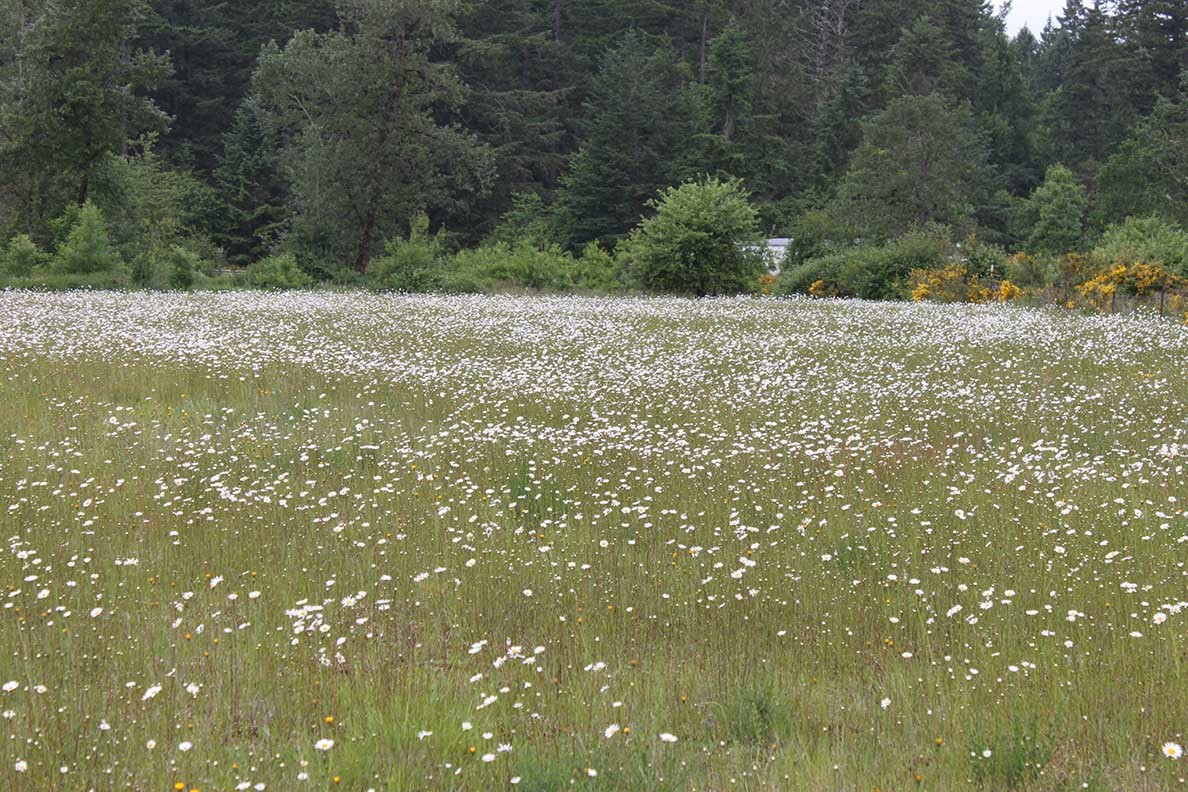
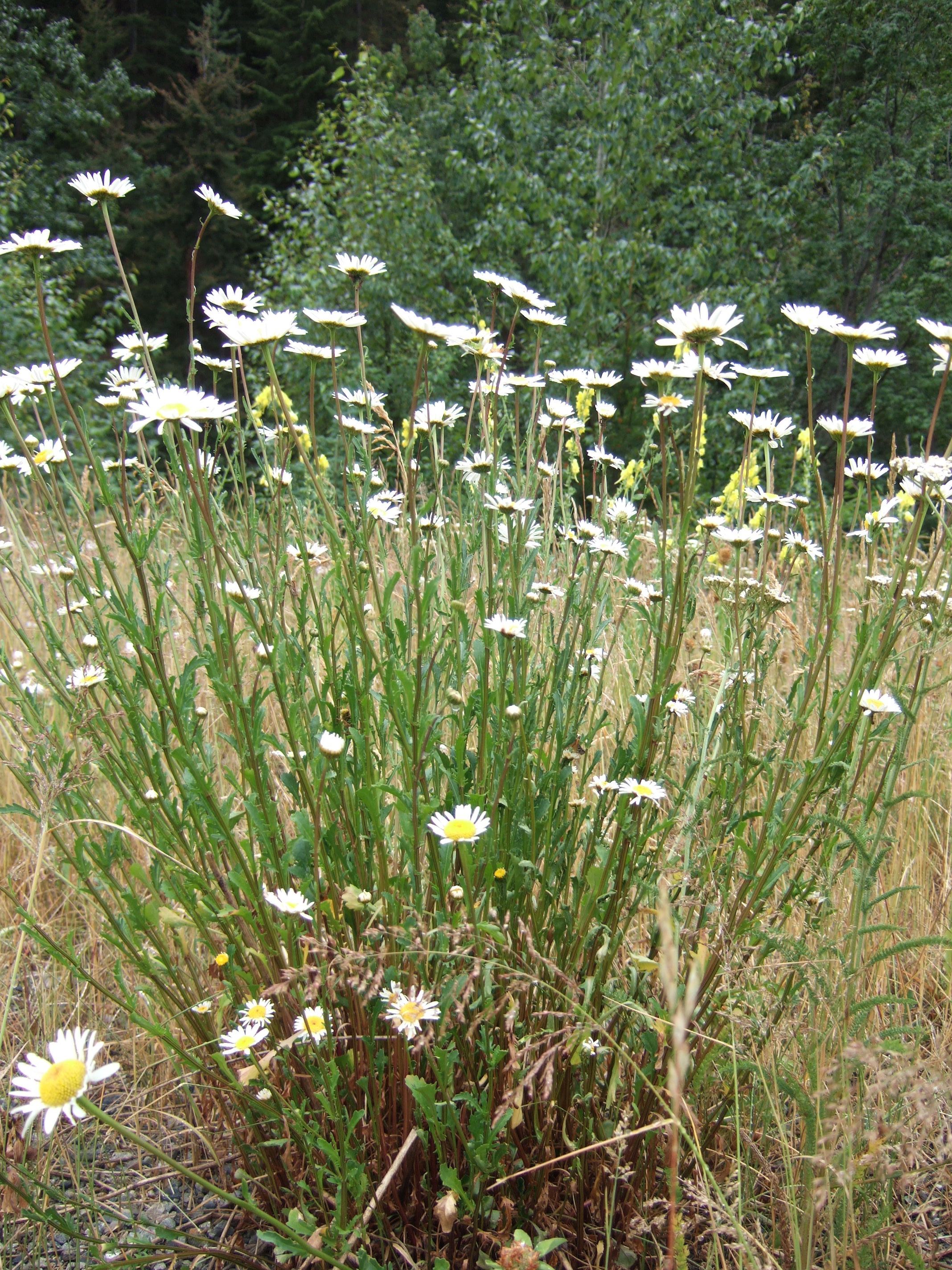
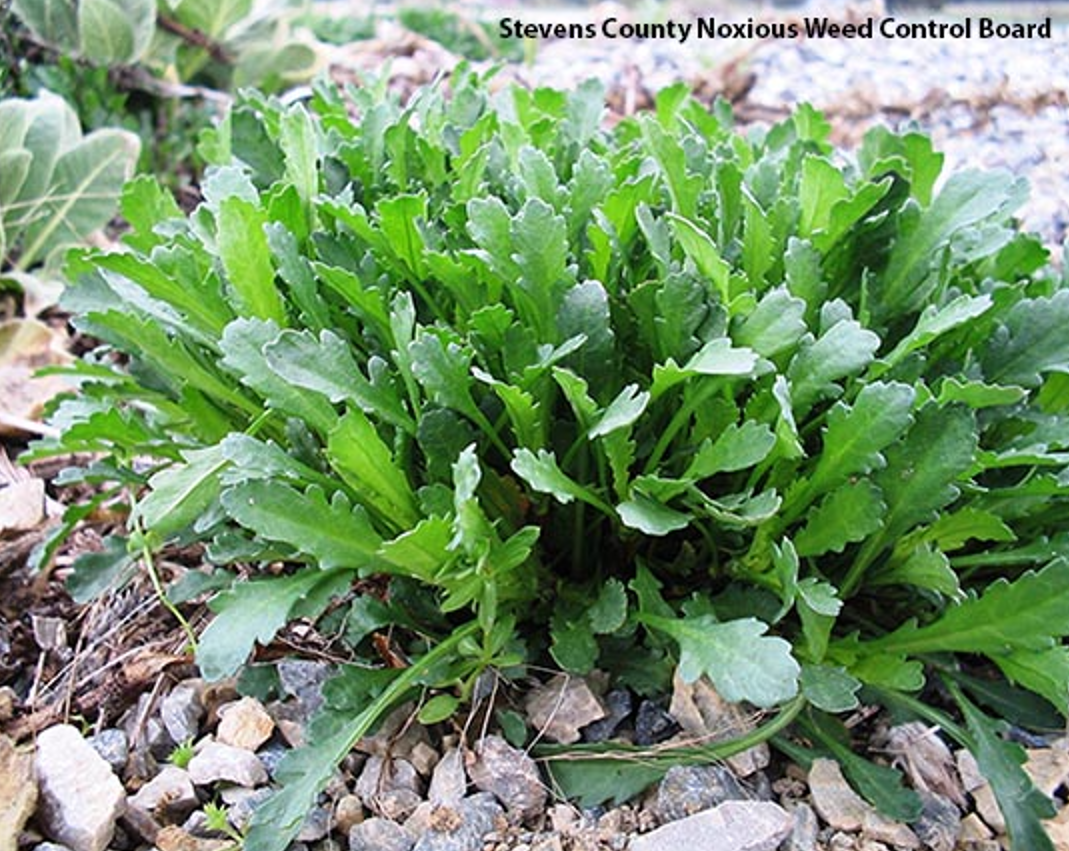
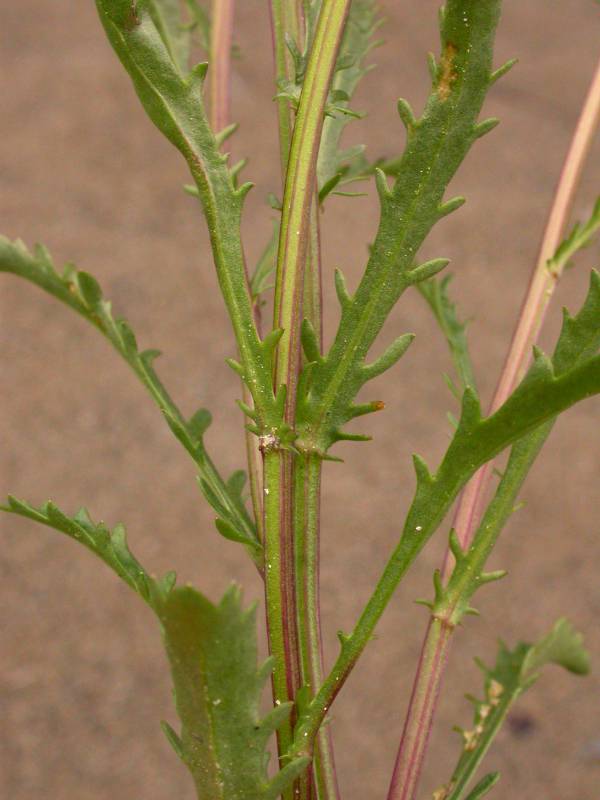

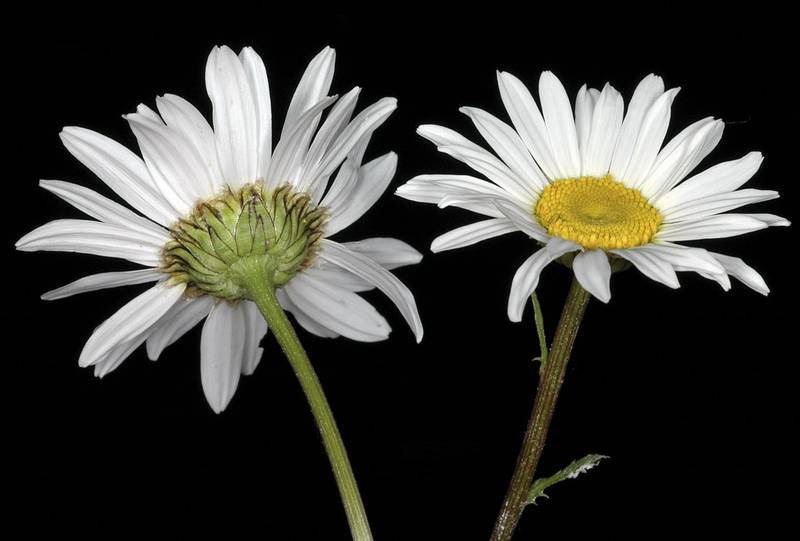
Be aware of look-alike plants
Shasta daisy Leucanthemum xsuperbum – Burke Herbarium
When in doubt, take photos and share them with us or report them on iNaturalist.
What to do if you find it
Because oxeye daisy is so widespread, property owners in King County are not required to control it. We are not generally tracking infestations. We can provide advice on how to control oxeye daisy, but there is generally no legal requirement to do so. The King County Noxious Weed Control Board encourages property owners to remove oxeye daisy where possible, and to avoid introducing it to new landscapes.
Control methods
We recommend using a combination of methods to control weeds. In areas with few weeds, it is important to act quickly before they become harder to control. Make a long-term plan, as it often takes several years to get rid of most weeds. Start in the least infested areas first and then move into more heavily infested areas.
Manual/Cultural control
Hand-pull or dig small patches, making sure to remove all roots. Monitor for regrowth and support desirable plant competition by keeping up with maintenance through the seasons.
Mechanical control
In pastures, mowing tall stalks before first flowers open can delay seed production, but plants may flower again. Consistent mowing can work eventually, but will take multiple seasons of consistent mowing to discourage seed production and exhaust the root systems. If have already started to form, it’s best to use a mowing attachment that collects cut flower heads as cut flowers may still produce seeds. Because of its shallow root system, intensive tilling effectively kills oxeye daisy.
Chemical control
Herbicide treatments are most effective before flowering. See the PNW Weed Management Handbook for the most up to date and specific method for chemical control of oxeye daisy.
Stay safe when using herbicide:
- Always read the label before use.
- Wear a long-sleeved shirt, long pants, shoes, and eye protection.
- Follow state and local regulations.
For more information or a site-specific control recommendation in King County, contact the noxious weed program. For information in other counties in Washington state, contact your local weed board or your local cooperative extension office.
Disposal instructions
Put flowering or seeding stems in the yard waste or trash. Backyard composting of seeds is not recommended for noxious weeds. Non‐flowering foliage can be composted. Keep an eye on root wads if home composting as they can re-root. Never dump yard waste in parks or natural areas.
Washington State Noxious Weed Control Board pamphlet on noxious weed disposal

 Translate
Translate